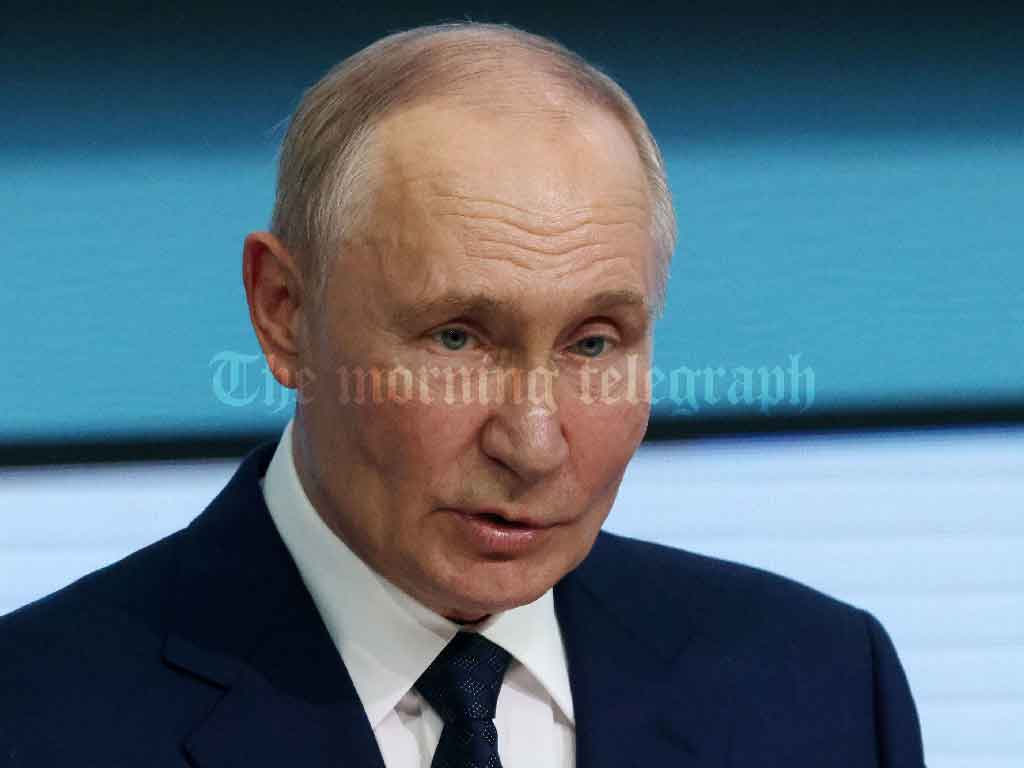
- Russia warns of heightened escalation as U.S. approves Ukrainian use of long-range ATACMS missiles to strike Russian soil.
The Kremlin has strongly condemned President Joe Biden’s recent decision to allow Ukraine to use U.S.-supplied Army Tactical Missile Systems (ATACMS) to strike targets inside Russia, warning that it would drastically escalate the conflict and increase international tensions. This policy shift comes on the eve of the 1,000th day of Russia’s full-scale invasion of Ukraine and follows a deadly Russian missile attack on the Ukrainian city of Sumy that killed 11 and injured 84, as well as an attack in Odesa that resulted in 10 deaths and 43 injuries. The new U.S. policy change is seen by Moscow as a direct provocation, with Russian officials accusing the West of intentionally stoking the war and making it impossible to de-escalate.
Until now, the United States had withheld permission for Ukraine to strike Russian soil with longer-range weapons, fearing that it could lead to a direct confrontation between Russia and NATO. However, in a significant policy shift, U.S. officials have decided to ease restrictions on what Ukraine can target with ATACMS missiles, which have a range of approximately 300 kilometers (190 miles). This would enable Ukraine to strike key Russian military positions deep within its territory, potentially disrupting logistics, supply chains, and command centers. The decision follows growing concerns about North Korean involvement in Russia’s war effort. Reports have indicated that North Korean troops are being deployed in Russia’s Kursk region to support Russian forces, further complicating the dynamics of the conflict. U.S. officials noted that this involvement of North Korean soldiers was a major factor in Biden’s decision, as it raised the stakes of the war significantly and prompted Washington to take a more assertive stance.
The Kremlin has condemned the decision in no uncertain terms. Russian spokesperson Dmitry Peskov stated that the Biden administration’s actions would “add fuel to the fire” and escalate tensions between the West and Russia, potentially bringing NATO countries into direct conflict with Russia. Russian officials, including President Vladimir Putin, have repeatedly warned that any attempt to involve Russia’s homeland in the conflict would fundamentally change the nature of the war, suggesting that it could be seen as a declaration of war by NATO. Putin also emphasized that NATO’s support for Ukraine with advanced weapons systems, including longer-range missiles, could eventually lead to retaliation. The Russian government has warned that it could supply its allies, such as North Korea, with long-range weapons that could be used to target NATO countries if the West continues to arm Ukraine.
The decision to provide Ukraine with longer-range missiles has triggered a mixed response internationally. Some NATO members, including Poland and Estonia, have praised the move as a crucial step in countering Russia’s increasingly aggressive tactics. Polish President Andrzej Duda hailed the decision as a “breakthrough moment” that could turn the tide in the war, particularly in the face of intensified Russian missile attacks on civilian targets in Ukraine. Meanwhile, other European leaders, such as Slovakian Prime Minister Robert Fico, who is known for his pro-Russian stance, have criticized the move as an “unprecedented escalation,” warning that it would only prolong the conflict and increase the risk of a wider war.
Military analysts have pointed out that while the ATACMS missiles could give Ukraine a strategic advantage, their limited stockpiles might not have a significant long-term impact on the war’s trajectory. Experts also warn that Russia could retaliate by stepping up its attacks on Ukraine’s civilian infrastructure, and that the move could prompt Russia to take more drastic measures, including the use of nuclear weapons. Additionally, Ukraine’s military may struggle to maintain the offensive without a continuous supply of these advanced weapons, as the U.S. stockpiles of ATACMS are limited.
Ukrainian President Volodymyr Zelenskyy has welcomed the U.S. decision, albeit with caution, stating that “the missiles will speak for themselves.” Ukrainian Foreign Minister Andrii Sybiha remarked that the U.S. approval of longer-range missiles could be a “game changer,” asserting that it would shorten the duration of the war by enabling Ukraine to hit Russian supply lines, command centers, and logistics hubs far behind the front lines. However, other officials remain more skeptical, arguing that the timing of the decision may be too late to have a major strategic impact.
Meanwhile, there are concerns that the shift in policy could embolden Russia, potentially leading to more aggressive actions in Ukraine and even prompting Moscow to expand its military campaign beyond Ukraine’s borders. Russia has already warned of the potential for catastrophic consequences if NATO’s involvement deepens. The Kremlin has warned that any further escalation would not only increase the risks of direct confrontation with NATO but could also lead to a more destructive phase of the war, especially if Moscow believes that its sovereignty is being threatened.
The policy change marks a pivotal moment in the conflict, with new weapons, alliances, and military strategies shaping the future of the war. With Russia increasingly facing challenges on the battlefield and Ukraine seeking to break the deadlock, the situation remains precarious. The shift in U.S. policy signals the growing resolve of NATO countries to support Ukraine, but it also raises the stakes significantly, as both sides now face the possibility of broader, more dangerous escalation. The next steps in the conflict will be crucial as the war enters its third year, with no clear resolution in sight.




